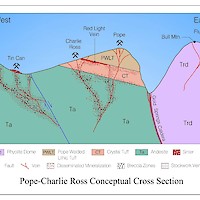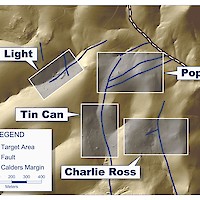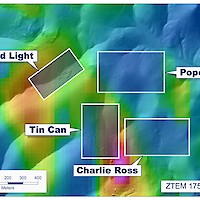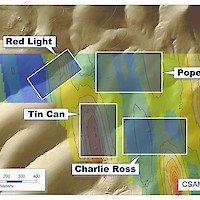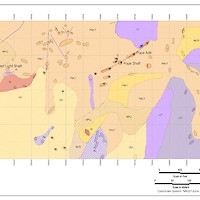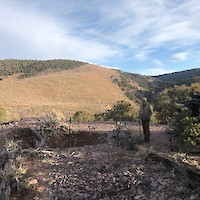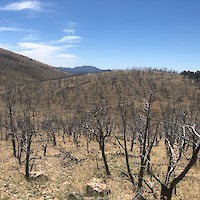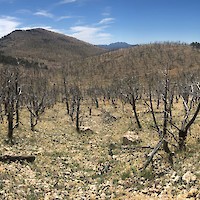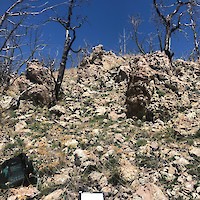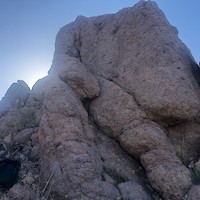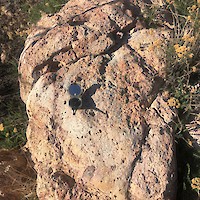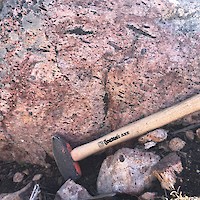System Type:
Sheeted high-grade, banded, epithermal, quartz veining and stockwork zones
Strike-Length:
The Pope has an exposed strike length of 400 metres and a width of 100 metres consisting of a series of historical cuts, trenches, shafts and adits which exploited the high-grade veins.
Resource:
None at this time
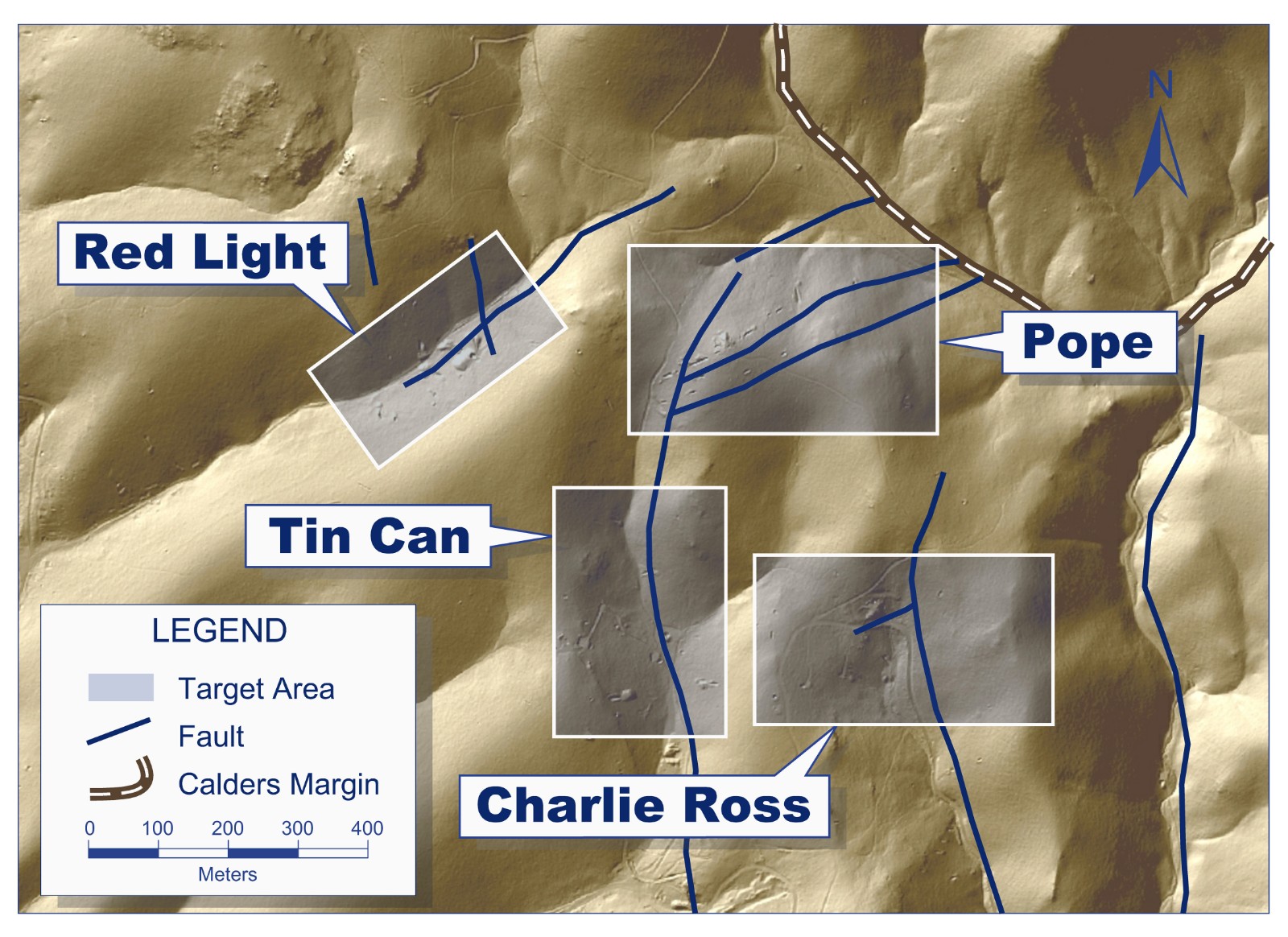
Location:
The historic Pope mine, now part of the Pope Target area, is located on the Nevada side of the Gold Springs project, on the margin of the Gold Springs caldera, and is situated 500 metres northeast of the historical Charlie Ross mine, now part of the Charlie Ross target area.
Drilling:
Two RC drill holes were completed at the Pope in 2012. Both holes were lost before reaching their target. P-12-001 drilled into an open stope between 56.4 and 65.5 metres in the vicinity of the Pope shaft. At a depth of 76.2 metres the hole encountered 1.52 metres grading 9.2 g/t gold and 3.3 g/t silver. At a depth of 85.3 metres the hole entered the underlying andesite which serves as a host for all of the 4 current resources at the Gold Springs project. Here the hole returned 7.6 metres of 0.26 g/t gold prior to being lost. Hole P-12-002 was lost before reaching any of the target zones.
Geophysics:
Pope is situated on the northern end of both a north-south trending ZTEM and CSAMT geophysical resistivity anomaly. These anomalies are at a lower amplitude than those seen in the Jumbo trend and may be looking at deeper features than in the current resource areas at Gold Springs.
Geology:
The historical Pope mine is located on the margin of the collapsed Gold Springs caldera and 500 metres northeast of the Charlie Ross target. Mineralization at Pope is hosted in a welded tuff where radial faulting attributed to caldera collapse has structurally prepared the host rock creating pathways for mineralizing fluids. Veins filling these fractures were historically exploited by a shaft, tunnels, and long slot cuts on surface. In general, the welded tuff displays limited alteration with occasional areas of silicification with associated brecciation and stockwork veining. The Pope welded tuff overlies the non-welded tuff of the Charlie Ross which has a high permeability. One of the targets at Pope is this contact zone to test for the possibility for gold mineralization ponded below this contact.
Structural Geology:
The Pope target consists of a series of parallel structures oriented generally east-west which are interpreted to be radial fracturing related to the Gold Springs caldera. These fracture zones host narrow veins within the welded tuff which can carry very high-grade gold and silver values.
Historical Mining:
The Pope shaft is the dominant historic working and is estimated to be 75 metres deep. There are numerous slot cuts which were excavated along the vein structures over a strike length of 400 metres that exploited the high-grade gold and silver of this system.
Geochemistry:
High-grade mineralization is hosted within banded and bladed quartz veins and returned grades as high as 20.2 g/t gold and 233.6 g/t silver. The host rock is a welded tuff containing irregular and discontinuous quartz stringers as well as narrow veins which were historically mined over a strike length of 400 metres. Also, altered, welded tuff host rock displaying brecciation and stockwork veining is also found, characteristic of a lower grade disseminated target with one sample containing 0.53 g/t gold.
Table: Rock Chip Sampling Results from Pope:
|
Sample |
Sample Type |
Target |
Description |
Au g/t |
Ag g/t |
| 224324 |
Float |
Pope |
Vein |
8.9 |
88.8 |
| 224325 |
Float |
Pope | Vein |
3.2 |
107.0 |
| 224326 |
Dump |
Pope | Vein |
20.2 |
83.2 |
| 224333 | Dump | Pope | Vein | 6.2 | 46.6 |
| 224334 | Dump | Pope | Vein | 14.5 | 233.6 |
| 224336 | Dump | Pope | Vein | 6.3 | 63.9 |
| 224341 | Dump | Pope | Vein | 6.6 | 12.2 |
| 224342 | Dump | Pope | Vein | 2.6 | 34.6 |
| 224365 | Grab | Pope | Breccia/stockwork in tuff | 0.53 | 13.4 |
A cutoff grade of 0.25 g/t Au was used, which is the cutoff grade of Gold Springs’ existing resources.

